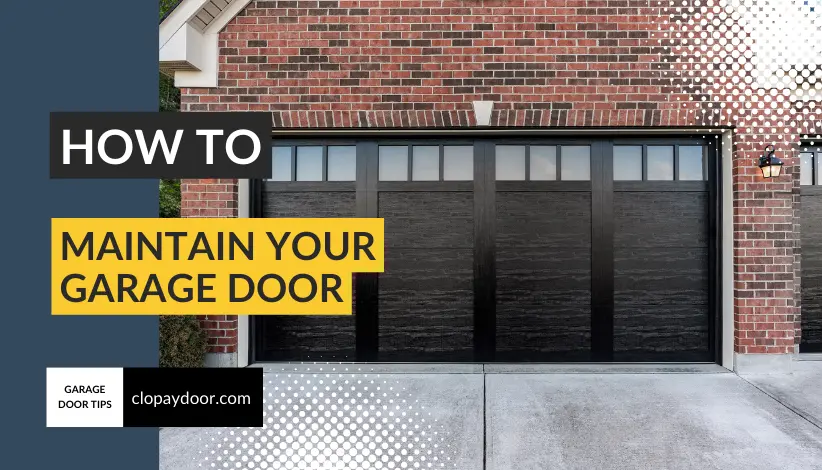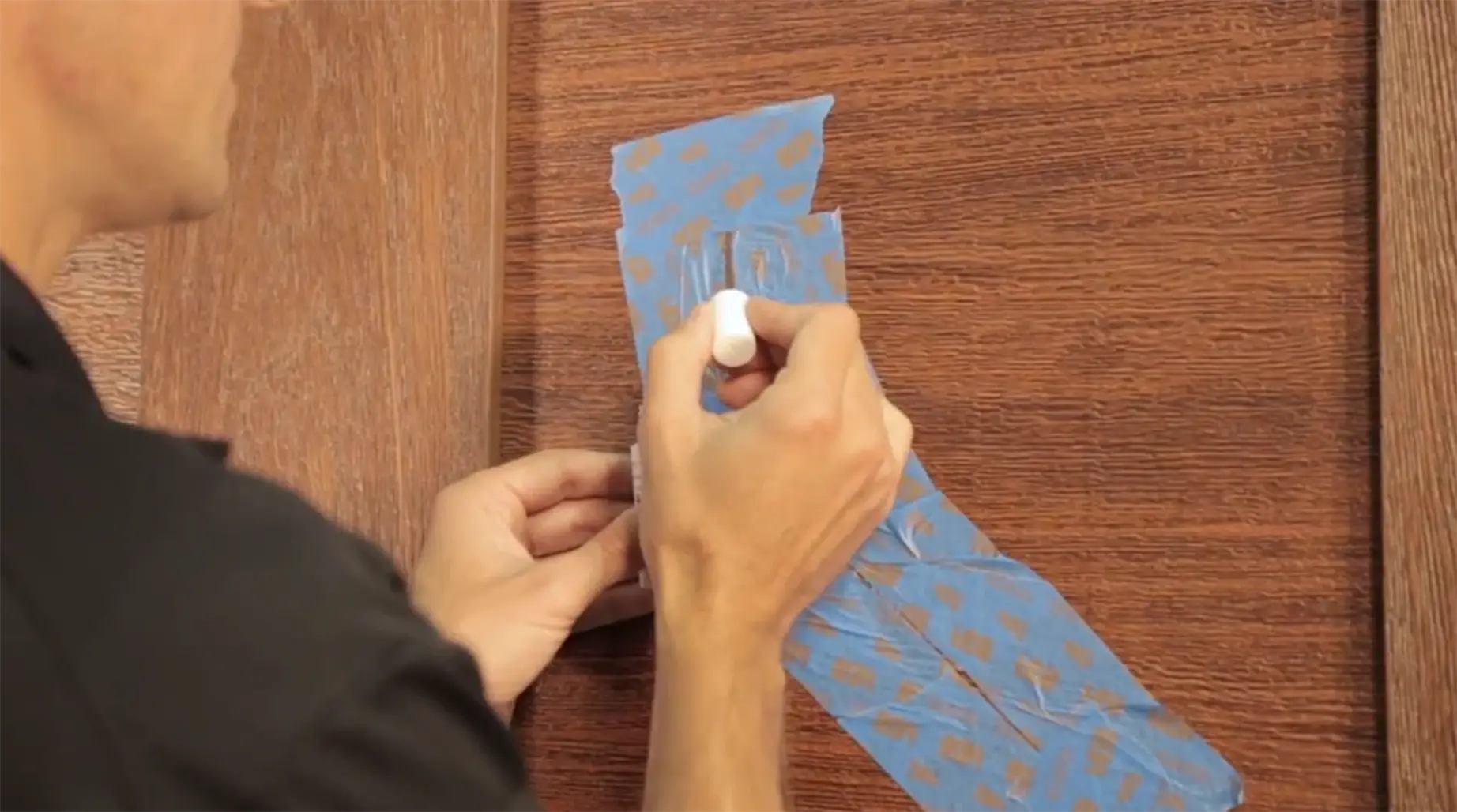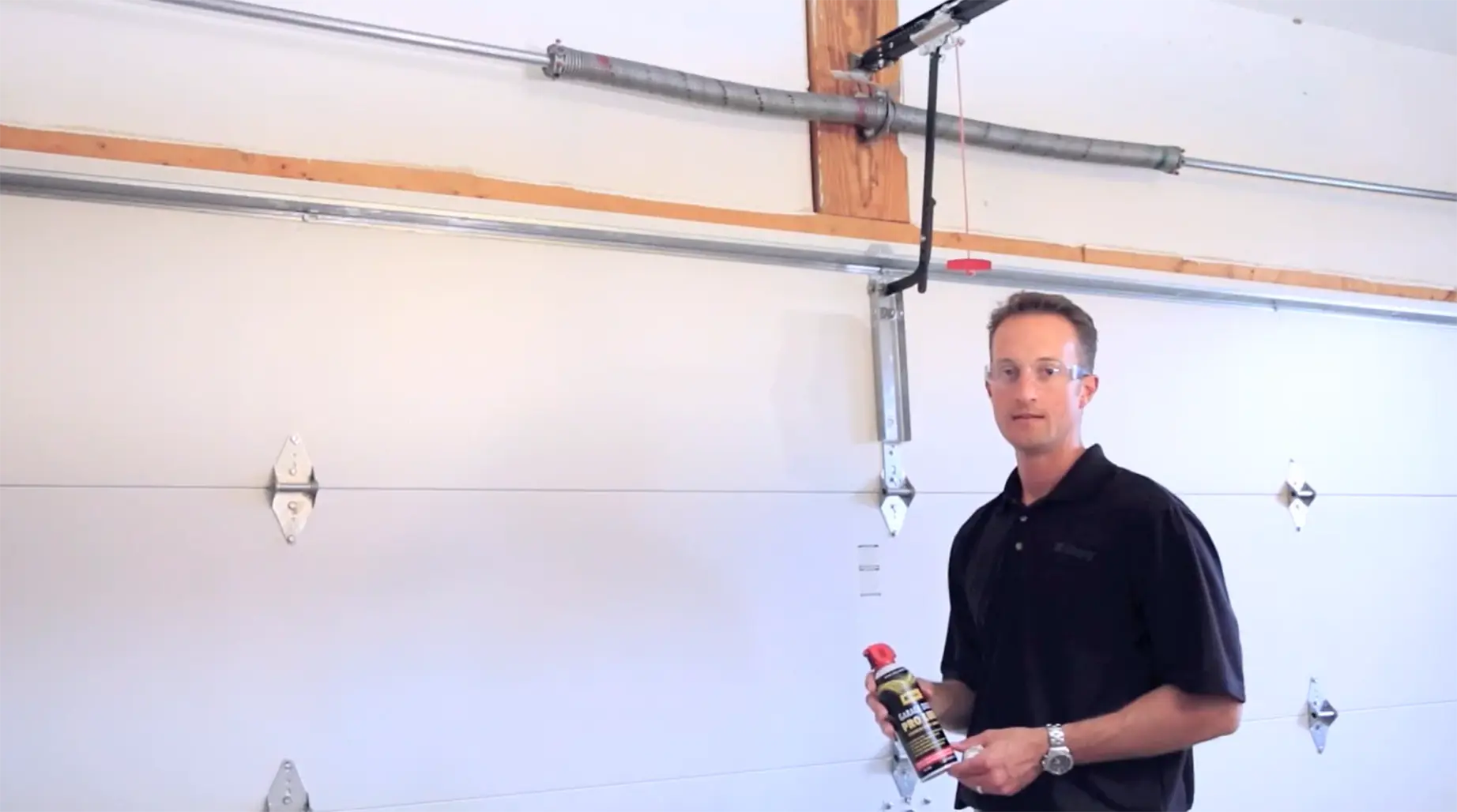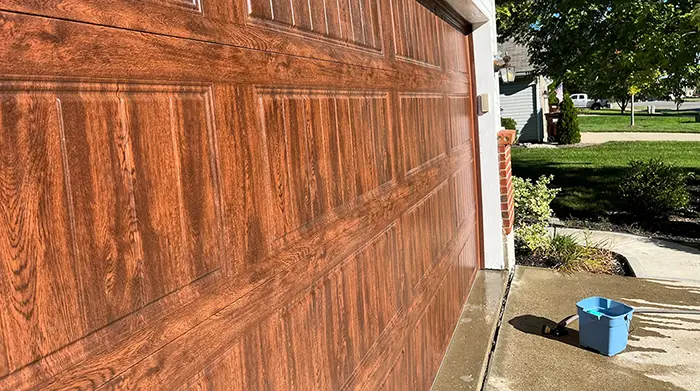How to Touch Up Canyon Ridge Garage Door
Do you have damage to the overlays on your Canyon Ridge garage door? Watch this video to learn how to repair.



As a prominent feature of your home's façade, the condition of your garage door can have a big impact on your home's appearance and value. Regular maintenance can help keep your door looking great and operating smoothly for years to come. Occasionally checking on your garage door can also prevent it from needing expensive repairs down the road.
If you find parts that need replacing during your garage door maintenance, swap them out if possible. You can purchase parts through most garage door dealers or at The Home Depot. Avoid replacing some of the more complicated hardware, as you could injure yourself or the door without proper training.
Clopay® garage doors are built to last, but some parts do occasionally wear out or become damaged. Virtually any component of the door can be replaced. If you are reasonably handy and follow the instructions in your installation manual you can do some repairs yourself. Our DIY replacement parts include:
We recommend the following repairs be handled by a garage door repair professional.
A quick review of your garage door's components can be a great way to ensure your door continues to operate consistently. Review these areas at least annually and as often as every three months:
Here are six steps you can take to maintain your garage door.
Use a small brush to clean the tracks, then gently wipe them with a damp cloth.
Use a wrench, socket or screwdriver to tighten loose brackets, bolts and screws.
Lubricate door hinges, rollers (except nylon rollers) Sheave bearings, torsion springs and all lift cables annually.
Test the pressure sensor and auto-reverse as well as the photoelectric sensor.
Pull the opener's automatic release handle and lift the door until it's halfway open. If it's balanced, the door will stay open halfway.
Painting instructions specific to your door model can be found in your owner's manual.
Over time, dirt, debris and rust can build up in your garage door's tracks. This build-up can prevent your garage door from working correctly and cause problems. Use a small brush to clean the tracks and parts carefully, then gently wipe them down with a damp cloth.
As you use your garage door over and over, the vibration of the door can loosen the components. Use a wrench, socket or screwdriver to tighten loose brackets, bolts and screws. Be careful not to overtighten the hardware — overtightening can cause stripping or damage to the door parts. If you come across any smaller rusted or damaged parts, you can replace them.
Lubricate door hinges, rollers (except nylon rollers), sheave bearings, torsion springs and the lift cables at the bottom corners of the door annually with Clopay Pro-Lube. Lubricant allows door hardware to work smoothly and correctly. Improperly lubricated components can stick and prevent the door from working. Garage door lubrication is essential to avoiding damage, wear and loud noises. You can purchase Clopay Pro-Lube from your Clopay® Dealer or at The Home Depot.
While performing your garage door maintenance, always test the safety features. Checking these features keeps you and your family safe from accidents and injury when using the garage door. Automatic doors typically come with pressure sensors and auto-reverse, which prevent the door from closing on an object in the garage door's path.
To test the pressure sensor and auto-reverse, have the garage door close on a small plank of wood or solid object. When the door touches the object, it should reverse and open. If it fails to reverse after touching the object, have a professional inspect and repair or replace your pressure sensor to prevent accidents.
You'll need a long object like a broom to test the photoelectric sensor. Begin automatically closing the garage door, then wave the broom underneath the closing door. If the sensor is working correctly, the door should reverse. If it doesn't, the sensor isn't responding correctly and will need a professional inspection.
The spring tension affects the door balance. Tension that is too low or too high makes your opener work harder, straining the system and leading to unnecessary wear and tear. To test the balance, pull the opener's automatic release handle and lift the door until it's halfway open. Balanced doors will stay open halfway, but unbalanced doors will close or open themselves. Don't attempt to fix the balance yourself — call a professional to get your balance corrected.
Wood garage doors will need to be checked yearly for cracking, peeling paint or fading. Wood garage doors must be painted or stained on all sides before installation and refinished every few years, depending on your area's exposure and weather conditions. Unless you want to change the color, steel, composite or aluminum garage doors do not need to be repainted. Painting instructions specific to your door model can be found in your owner's manual.
While regular monthly checks are important, changing seasons bring unique challenges to your garage door's performance. A little extra attention during the spring, summer, fall, and winter will keep your door running smoothly and prevent costly repairs.
In the spring, be sure to:
In the summer you’ll want to:
Come fall, you’ll need to:
While some tasks are best left to professionals, there are several DIY maintenance tasks you can perform on a regular basis to keep your garage door in top condition. Start by observing the door in motion. Does it move smoothly or are there jerky motions? Do the sides move evenly? Any irregularities can indicate an issue with the springs, cables, or tracks.
Test the balance by disconnecting the opener and manually opening the door halfway. It should stay put. If not, the springs may need adjustment. Don't forget to check the safety reverse by placing an object on the ground (a brick or block of wood) where the door normally hits. The door should reverse upon hitting it. If not, the sensors may need adjustment.
Inspect the cables for signs of wear like fraying or rust. Call a professional if you notice damage. Check and tighten any loose bolts or screws on the rails, hinges, or brackets, but don't overtighten. Also, test the emergency release by pulling the red handle to ensure the door can be opened manually during a power outage.
Lubricate the moving parts by applying a silicone-based lubricant to the hinges, rollers, and springs. Never use grease, as it attracts dirt and dust. Inspect the tracks to make sure they're securely attached to the walls and there are no signs of bending or rust. You can tighten loose bolts, but don't try to repair damaged tracks yourself.
Remember, if you ever find a problem during your DIY checks, it's best to call a professional. They have the tools and knowledge to make necessary repairs safely and correctly. Regular DIY maintenance, though, can go a long way in extending the life of your garage door and opener.
While DIY maintenance is important, bringing in a professional for periodic checks or whenever issues arise, will keep your garage door running smoothly and safely for years to come. A professional garage door technician can perform a thorough inspection and tune-up, including checking springs, cables, and pulleys for signs of wear and making necessary adjustments or replacements. These parts are under extreme tension and shouldn’t be handled by a novice.
If the door isn't perfectly balanced, it can put unnecessary strain on the opener, so a pro will adjust the springs for smooth operation. They'll also make sure sensors are aligned and the emergency reverse is working correctly, and secure loose parts and replace any worn-out components.
If the door is shaking, making loud noises, or struggling to open and close, don't hesitate to call a pro. And if the door has been damaged, have it inspected and repaired by a professional before continuing to use it.
Regular professional maintenance can extend the life of your garage door and opener, increase safety, improve energy efficiency by keeping the garage insulated, and give you peace of mind knowing everything is in good working order.
Reach out to your local dealer for service or watch some of our garage door maintenance videos below for advice on how best to maintain your garage door.
Browse our videos below for tips to keep your garage door running safely and smoothly

Do you have damage to the overlays on your Canyon Ridge garage door? Watch this video to learn how to repair.


Learn how to repair a scratch on your Ultra-Grain garage door.


Learn how to manually open your garage door if your power goes out, or if your opener just is not working.


Is your garage door loud when you open and close it? Learn how to have a quieter door.


Is your garage door looking dingy? Watch the video below to learn how you can easily make it shine!

